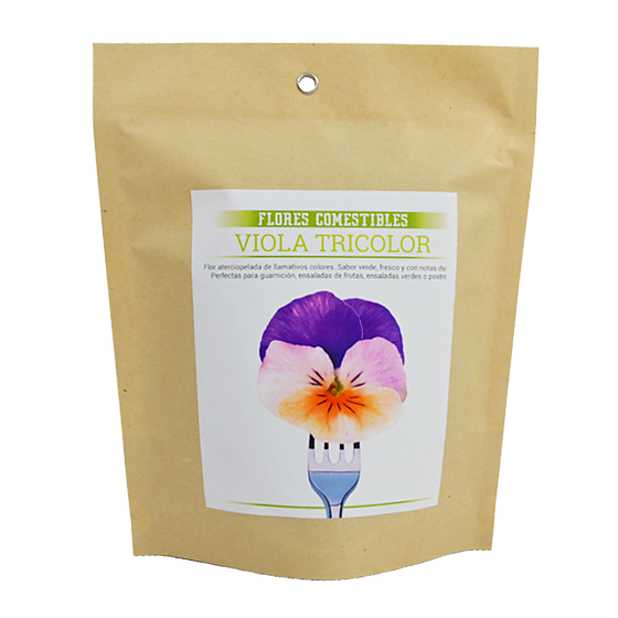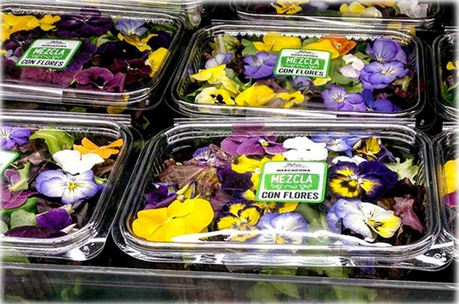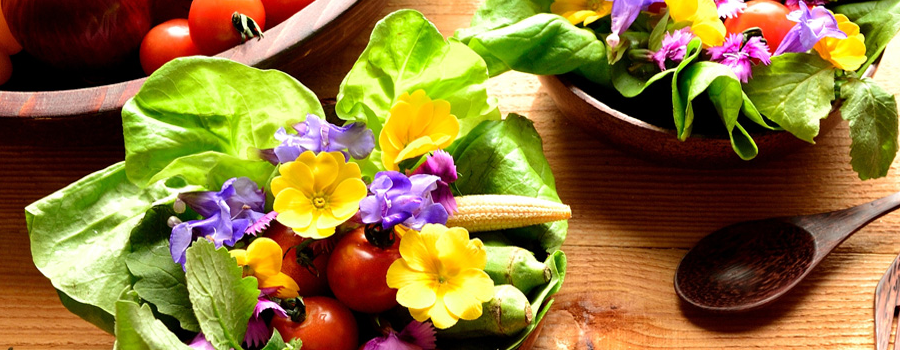
Perfect for decorating, giving, perfuming, infusing… and why not to eat? A few days ago we talked about “Realfooding”, an initiative that is fortunately taking positions in social networks and at the tables of many houses. For those who need a little more variety, color, taste or simply visual impact in their culinary preparations of real food, today we bring you this post in which we explain how to use this maximum exponent of “Realfooding”.
The use of flowers as part of our cuisine dates back centuries. Specifically known is the use of the pumpkin flower in Mexico, the violets in Roman culture, or in India, where the rose petals are part of the decoration of their most typical desserts. In Spain, this practice has not been so common, although perhaps unknowingly we are already using them in our kitchen because the cauliflower, artichoke, broccoli or chamomile are considered flowers.

Currently they have been in vogue thanks to international chefs who are introducing them in their creations, so that now it would not be strange to find as a starter of a menu a roasted artichoke perfumed with pink garlic flower, as a main dish a lamb shank confit with potato flower or as dessert a violets ice cream. And what a good idea! Because flowers, besides giving the dishes a great variety of colors, flavors and different aromas, improving the organoleptic characteristics, also help to increase the nutritional value of the meal.
Flowers are vegetables, with a water content higher than 80% and therefore have a low energy value, but with a high nutritional value, as they provide vitamins such as A, C, riboflavin or niacin; and minerals such as calcium, phosphorus, iron and potassium. In some publications, flowers have been considered functional foods, since they contain bioactive substances such as phenolic compounds, carotenoids or anthocyanins with antioxidant properties.
There are more than 55 species of edible flowers known, with many applications and utilities at culinary level, both in salads and soups and accompanying white and red meats, fish, pasta and rice or desserts. For example, the seeds of the poppy are used to flavor pastry products and their petals for wines and oils; the chrysanthemum confers different colors and bitter taste to salads and sauces; or jasmine, with white and sweet flavor is used in bird or fish dishes. Of course, all of them “Realfooding 100%”
But beware! Not all flowers are edible. There are some toxic species such as belladonna, hemlock, oleander flower, aubergine flower or dulcamara, among others. Although there is not much regulation in this regard, in Europe they are considered traditional foods (EFSA Journal 2016; 14 (11): 4590) and as such, in order to be used in food, flowers must fulfill certain characteristics regarding their chemical composition and the form of cultivation (free of pesticides, herbicides and non-organic fertilizers) as well as being microbiologically harmless. Regarding the use of pesticides, edible flowers must follow Regulation (EC) No 396/2005 of the European Parliament and of the Council of 23 February 2005 on the maximum residue limits for pesticides in food and feed of origin plant and animal, which has been modified by EFSA on two occasions to change the maximum residue level of ametoctradin (fungicide) to 20 mg/kg and that of flonicamide (insecticide) to 6 mg/kg (EFSA Journal 2017; 15 (6):4869).

The impossibility of using pesticides and herbicides, together with the highly perishable nature of edible flowers, means that this product has a short shelf life and that during its cultivation, preparation and packaging it is necessary to take care of every detail. The temperature is one of the factors that most affects the quality of the flower, existing different needs between species. In general, refrigeration extends the shelf life of the product, but some species may be sensitive to cold. Another factor to consider is the reduction of perspiration to avoid losses due to dehydration. The high relation between the surface and the volume of the flower, and also the thin cuticle of the petals, makes it highly susceptible to the loss of water. Likewise, packaging will be important, which should be rigid, similar to that of strawberries and other delicate and highly perishable products.
There are already companies that grow, prepare and package flowers for use in gastronomy. Are you one of them? Do you need to expand your product portfolio, improve the performance of your process, change the packaging or increase the half life of your product? In CARTIF we can help you, contact us.
If on the contrary you are not interested in edible flowers at business level, from CARTIF we encourage you to make your own floral menu and to enjoy the real real food. Bon Appetite!
- From waste to resource: how to give food by-products a second life. - 26 September 2025
- We´ve done it again: A new product on the market! - 31 January 2025
- You can also consume locally - 14 June 2024
